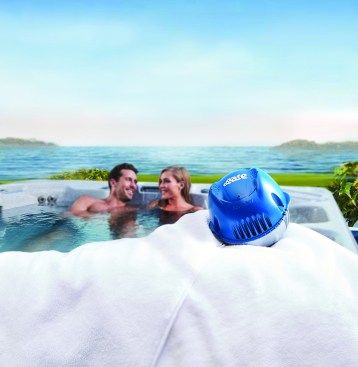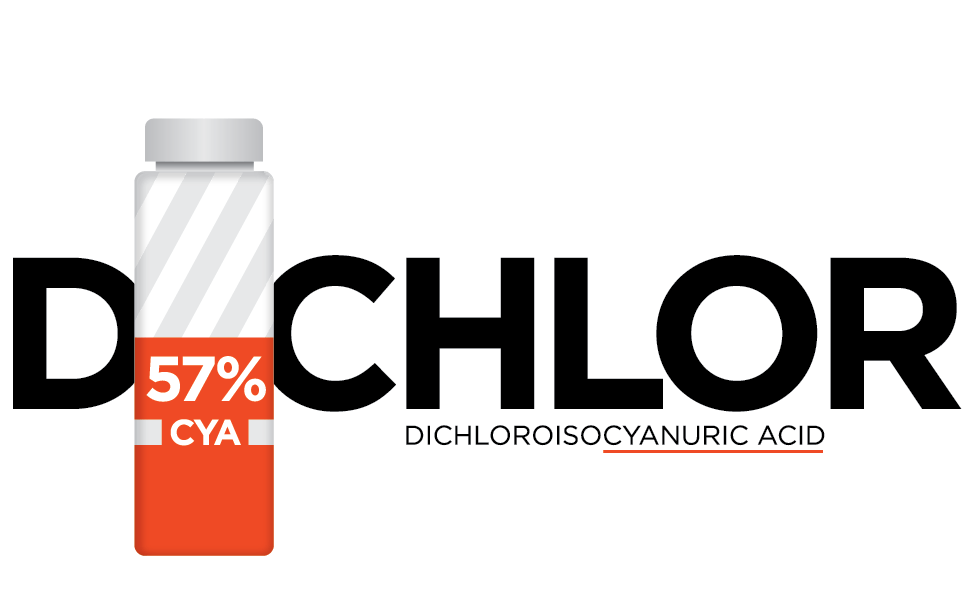In this article, the last of our 3-part series, we will focus on the issues hot tub owners face with high Cyanuric Acid (CYA) levels and the main culprit causing their frustrations that many dealers recommend to their customers. The good news is there are options.
Problems Arise
The result of CYA build-up in hot tubs is a myriad of negative effects that no hot tub owner wants to experience. Those include cloudy water, bad smelling water, skin irritations and worse. When disgruntled customers look for answers, they are told to add more chlorine to “shock the tub” which only compounds the problem by adding even more CYA. After as little as 2 months, there’s no way for chlorine to recover. Owners are forced to empty their spas prematurely which leads to frustration and the perception that owning a hot tub is difficult.

Courtesy King Technology
Warnings not Working
Even though the CDC and other scientific evidence says CYA should not be used in hot tubs, most hot tub owners use chlorine. According to PK Data in the APSP 2018 Yearbook, 60% of all hot tub survey respondents reported that they sanitize with chlorine and dichlor was reported to be the most often used and recommended by hot tub retailers.
Dichlor by Another Name
Dichlor is listed on its container labeling as sodium dichlor-s-triazinetrione with the added designator of either dihydrate or anhydrous. However, dichlor is also known as sodium dichloro isocyanurate which clearly calls out the cyanuric acid content of this formula. All disinfectants for hot tubs must be approved by the EPA (Environmental Protection Agency) and they must state the exact chemical ingredients and percentages on the label.
Now That You Know CYA is Bad

Courtesy King Technology
The majority of hot tubs are covered when not in use and are rarely used in the heat of the day. Therefore, sunlight (UV) degradation of chlorine is usually not an issue in hot tubs. CYA should not be used because it causes problems with killing microorganisms by slowing down chlorine’s kill times, which could potentially produce unsafe water. It could lead to corrosion or staining but more importantly, it makes taking care of hot tub water much harder than it needs to be.
Look for CYA-Free Solutions
There are sanitizing alternatives for hot tubs that do not contain CYA. FROG @ease from King Technology is one. This sanitizing system uses a unique chlorine called SmartChlor that contains zero CYA. It self-regulates at a low level which makes it the perfect companion for FROG Minerals that are also disinfectants. The combination is longer lasting water that’s easier to take care of.
When your customers are ready to get rid of their spa because it’s cloudy, smelly, itchy and too hard to take care of, invite them to try a slow dissolving sanitizer that has no CYA and experience the difference.
Learn more at nocya.com.
Resources for this article:
https://www.health.pa.gov/topics/Documents/Programs/Operations-SOPRecommendations.pdf
https://www.cdc.gov/healthywater/swimming/residential/disinfection-testing.html
J.E. O’Brien, J.C. Morris & J.N. Butler, “Equilibria Aqueous Solutions of Chlorinated Isocyanurate” Ch. 14 in Alan J. Rubin’s Chemistry of Water Supply, Treatment and Distribution”, Ann Arbor Science Publishers, Inc., 1974, ISBN 0-250-40036-7, pp. 333-358
Anderson, J.R., “A Study of the Influence of Cyanuric Acid on the Bactericidal Effectiveness of Chlorine,” American Journal of Public Health, Oct, 1965.


